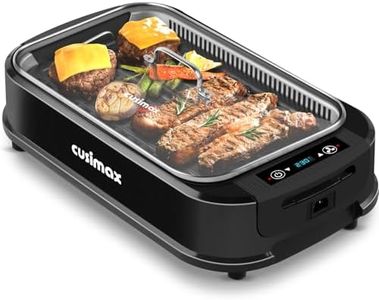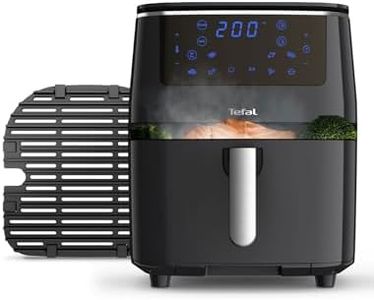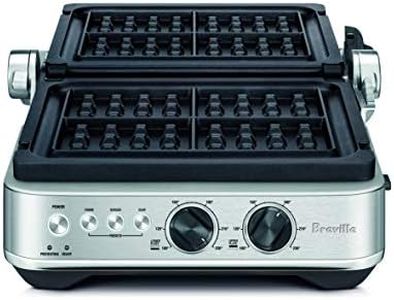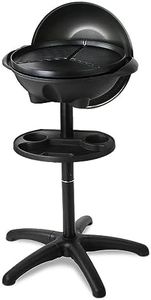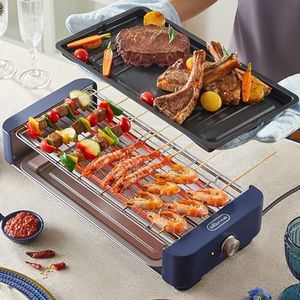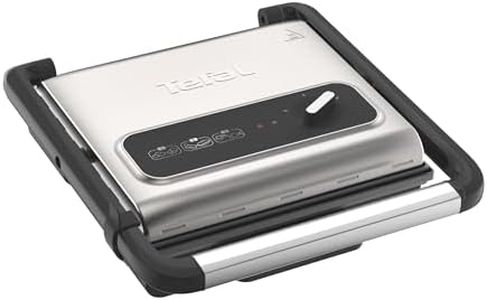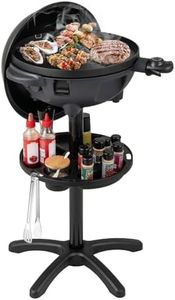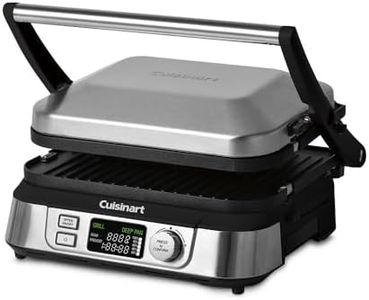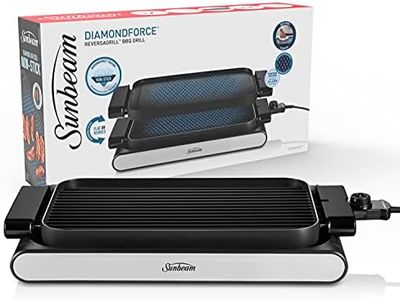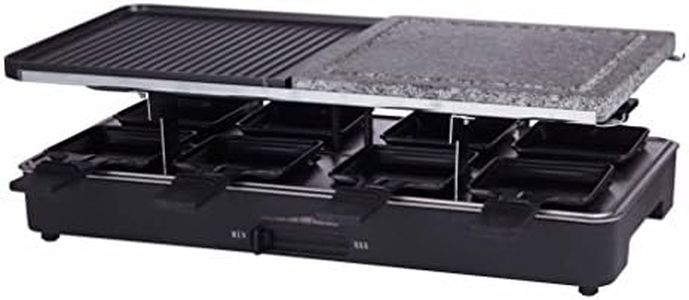We Use CookiesWe use cookies to enhance the security, performance,
functionality and for analytical and promotional activities. By continuing to browse this site you
are agreeing to our privacy policy
10 Best Electric Grills
From leading brands and best sellers available on the web.Buying Guide for the Best Electric Grills
Choosing the right electric grill can make your cooking experience enjoyable and convenient, whether you're grilling indoors or outside. When picking an electric grill, you’ll want to focus on key features that match your cooking needs and lifestyle. Think about where you’ll use it most, how many people you want to cook for, and the types of food you plan to grill. Understanding important specs will help you select a grill that is easy to use, safe, and produces great results.Cooking Surface AreaCooking surface area refers to the total space available on the grill where you can place your food. This is important because it determines how much food you can cook at once. A smaller surface (under 100 square inches) is great for singles or couples, while a medium surface (100-200 square inches) works well for small families. Larger surfaces (over 200 square inches) suit gatherings or frequent entertaining. Choose a cooking area based on how many people you typically cook for, so you’re not limited or left with a grill that’s too large for your needs.
Power (Wattage)The power of an electric grill is measured in watts and it indicates how quickly the grill heats up and how well it maintains high cooking temperatures. Low wattage grills (under 1200W) are often portable but may take longer to cook food, while mid-range wattage (1200W to 1600W) offers a good balance for most users. High wattage grills (over 1600W) heat up faster and are better for searing meat. Consider higher wattage if you want faster cooking times or often grill thicker cuts, but for lighter use or delicate foods, lower wattage may be sufficient.
Temperature ControlTemperature control allows you to adjust the grilling heat to suit different foods. Some grills offer preset settings, while others have adjustable knobs for precise control. Fixed or limited settings make operation simple and are fine for basic grilling, but an adjustable temperature gives you versatility for everything from slow cooking vegetables to quickly searing steaks. If you like experimenting with different recipes or cooking styles, look for adjustable temperature controls.
Non-Stick SurfaceA non-stick cooking surface is coated to prevent food from sticking, making grilling and cleaning significantly easier. Some grills have basic non-stick coatings, while others offer premium, more durable surfaces. If you often cook sticky or delicate foods like fish, a quality non-stick surface can help. Consider your cleaning preference too—if you want minimal cleanup, a grill with a removable non-stick plate is a good choice.
Drip TrayA drip tray collects excess fat and juices that run off the food while grilling. This helps reduce mess and makes cleaning effortless. Basic grills may have a built-in, fixed tray, while others offer removable trays for easy emptying. Think about whether you prefer cleanliness and easy maintenance; a removable, dishwasher-safe drip tray is particularly handy if you grill often or cook fatty foods.
Portability and SizePortability includes the size and weight of the grill, as well as features like handles or stands. Compact, lightweight grills are easier to move or store and work best for tabletop or indoor use. Larger models with stands are better for outdoor settings but might be bulky for small kitchens. If you need to store or move your grill frequently, or want to use it in different locations, opt for a compact or easily transportable design.
Lid DesignThe lid plays an important role in heat retention and cooking style. A grill with a hinged lid traps heat for faster cooking and can double as a mini oven for roasting, while open grills are more like stovetop grilling and are better for quick searing. If you enjoy diverse cooking (like melting cheese or grilling thick items), a lid is helpful. If you prioritize quick, open grilling, a model without a lid might suit you fine.
